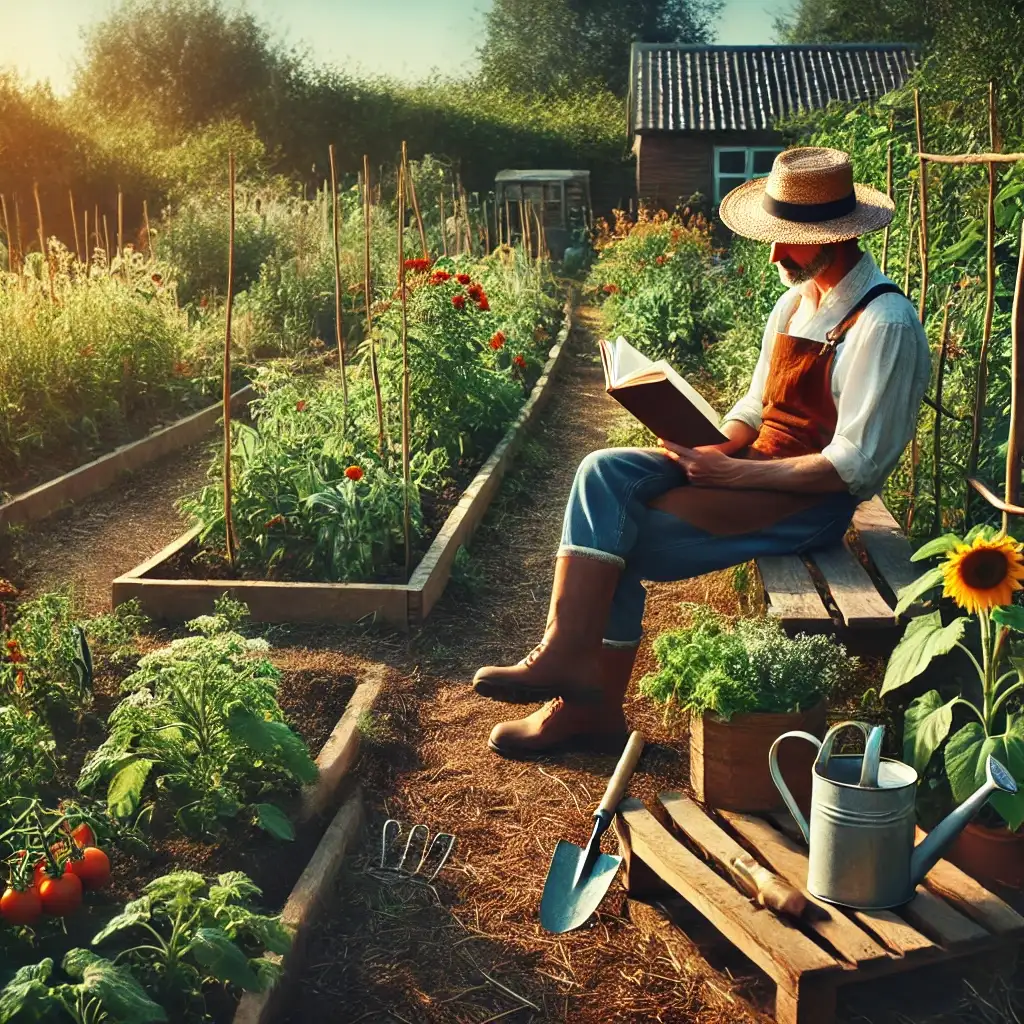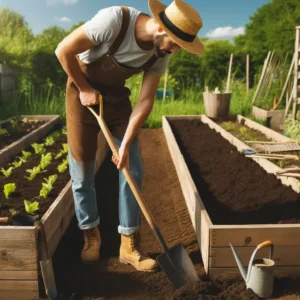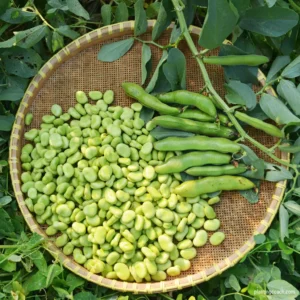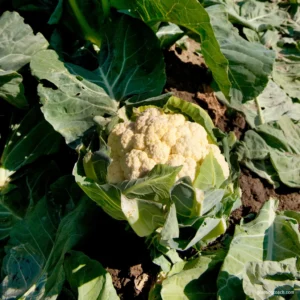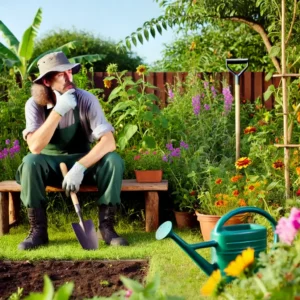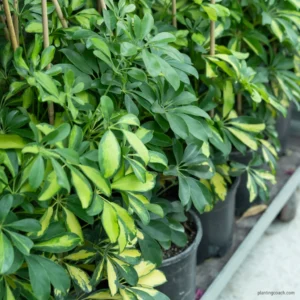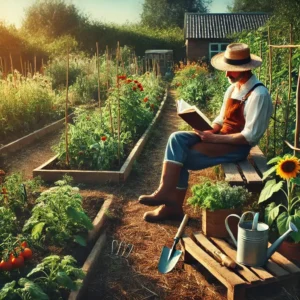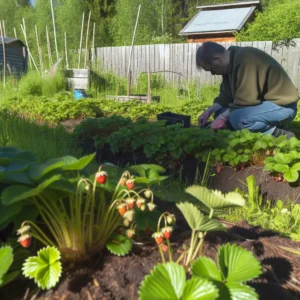Gardening is a delightful venture that beautifies your surroundings and enriches your well-being. It’s an activity that connects us with nature and provides a deep sense of accomplishment. Whether you’re managing a tiny urban balcony or a large backyard garden, refining your gardening skills can lead to more robust plant growth, a healthier environment, and increased yield. In this guide, we’ll explore the top 10 Tips to Improve Your Gardening Skills, where each tip is designed to help you understand the core aspects of successful gardening. From understanding the gardening basics to advanced planting techniques, you’ll be equipped with the knowledge to tackle common challenges and make the most of your gardening space by the end of this guide.
10 Tips to Improve Your Gardening Skill
Understanding the Basics of Gardening
The journey to becoming a proficient gardener starts with mastering the basic concepts of horticulture. A solid grasp of the fundamentals can significantly increase your ability to nurture a thriving garden. Begin by familiarising yourself with the different types of soils, understanding plant zones, and recognizing the needs of various plant species. Knowing how much sunlight your garden receives and at what times of day is crucial because sunlight is a pivotal factor in plant health.

Evaluate your garden’s exposure to the elements and consider how local weather patterns might affect plant growth. It’s also important to understand the nutrient requirements of your plants. Learn about macronutrients such as nitrogen, phosphorus, and potassium, which are vital for plant growth, and micronutrients like iron and magnesium, which are equally crucial though needed in smaller quantities. Familiarity with these elements will help you make informed decisions about soil amendments and fertilizers. Lastly, know the concept of plant lifecycle stages—from germination to flowering to seed production—each requires different care techniques.
Choosing the Right Tools for Gardening
The right gardening tools not only make your work easier but also prevent injury and plant damage. Start with the essentials: a durable, comfortable pair of gardening gloves to protect your hands from thorns, chemicals, and dirt. A well-crafted spade or shovel is indispensable for digging and planting, while a sturdy rake helps clear leaves and debris.
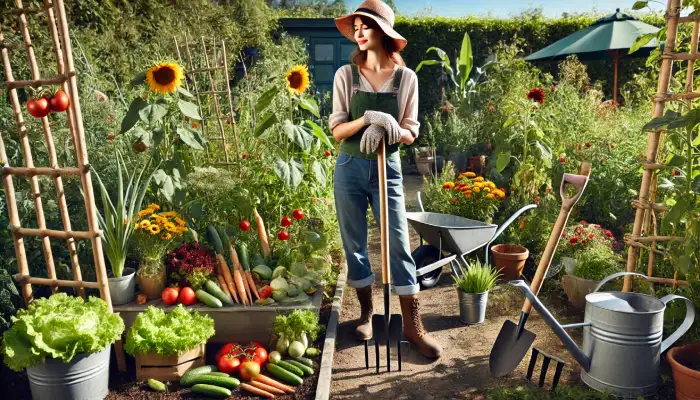
Consider the ergonomics of each tool to ensure they are a good fit for your body and gardening style. Tools with padded handles and lightweight materials can reduce fatigue and increase efficiency. Also, invest in a quality pruning shear for trimming bushes, snipping herbs, and deadheading flowers. For watering, a reliable garden hose with adjustable settings will accommodate the needs of different plants, providing a gentle mist for delicate flowers or a steady stream for deep-rooted shrubs.
Maintaining your tools is just as important as choosing the right ones. Regularly clean blades and handles and sharpen cutting tools to ensure clean cuts that heal quickly on plants. Properly maintained tools can last many seasons, saving you money and time while protecting your garden’s health.
Learning About Soil Health and Fertility
Soil health is a critical factor in the success of any garden. It affects everything from plant growth and water retention to resistance against pests and diseases. Start by assessing your soil type—clay, loam, sandy, or silt—to determine its water retention and aeration properties. Each type has unique benefits and challenges, and knowing which you have can guide your gardening strategies.
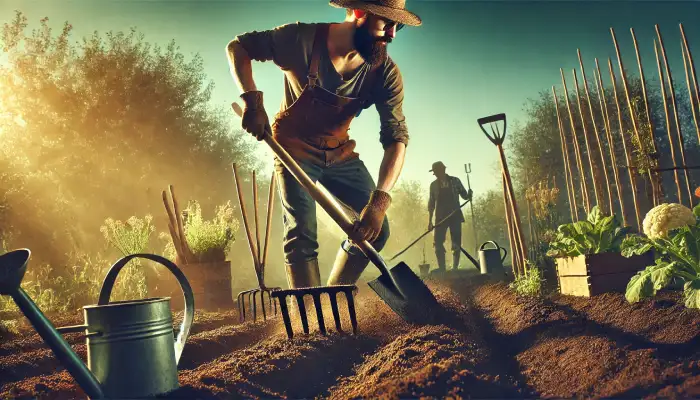
Improving soil fertility is often about adding organic matter. Compost, leaf mold, and well-rotted manure enrich the soil with nutrients and improve its structure, making it better to hold water and air. These amendments also encourage beneficial microbial activity that helps break down organic material into forms that plant roots can absorb. Regularly testing your soil for pH and nutrient levels can provide a roadmap for specific amendments to balance your soil, ensuring that plants receive the necessary macro and micronutrients.
Additionally, cover crops such as clover or ryegrass can be grown during the off-season. These plants add organic matter, prevent erosion, and fix nitrogen in the soil, making it fertile for the next planting season. Understanding and maintaining soil health is an ongoing process that pays dividends in the vitality and productivity of your garden.
Mastering Watering Techniques
Effective watering goes beyond simply keeping your plants from drying out—it’s about understanding the specific moisture needs of each plant and the most efficient methods to meet them. Over-watering can be as harmful as under-watering, leading to root rot and fungal infections. Conversely, under-watering can stress plants, making them more susceptible to disease and pest problems.
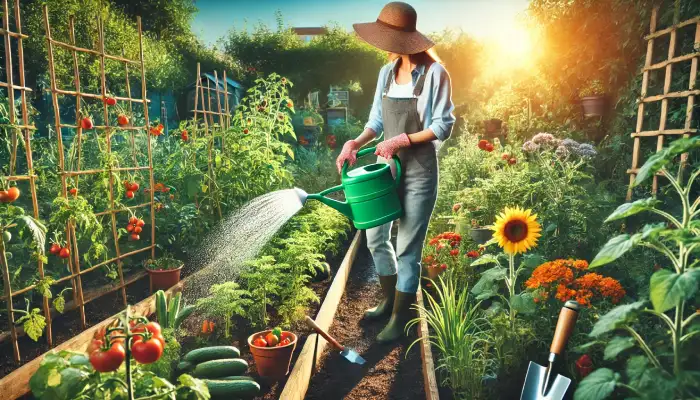
To water wisely, first, consider the time of day; early morning is ideal because it allows water to soak into the soil before the heat of the day causes evaporation. For deeper-rooted plants, use a soaker hose to deliver water directly to the soil, minimizing waste and preventing the spread of leaf-borne diseases. Watering deeply but infrequently encourages plants to develop deeper root systems, boosting their drought tolerance.
Monitor soil moisture using a simple finger test—stick your finger into the soil up to the second knuckle. If the soil at your fingertip feels dry, it’s time to water. Employing rain barrels to collect water conserves this resource and provides your plants with chemical-free nourishment that can sometimes be superior to tap water.
Implementing Effective Planting Strategies
Strategic planting can maximize your garden’s potential and improve plant health. Start by understanding the structural requirements of each plant. Crowding plants can lead to competition for light, water, and nutrients, while sparse planting might reduce the productivity of your garden space.

When planting, consider companion planting strategies where certain plants benefit each other by repelling pests, improving growth, or attracting beneficial insects. For example, marigolds emit a natural chemical that deters nematodes and other pests, making them excellent companions for tomatoes and peppers.
Additionally, rotating your crops each year can prevent the buildup of pests and diseases in the soil, providing each new plant with a clean slate. This technique also aids in maintaining soil health by varying the nutrients drawn from the earth by different plants. When transplanting seedlings, be gentle with the roots and ensure each plant is positioned at the correct depth according to its specific needs—some plants thrive when planted deep, while others prefer a more shallow placement.
Understanding and Controlling Pests
Pest management is crucial for maintaining a healthy garden. Early identification and intervention can prevent pests from becoming a widespread problem. Begin by learning to recognize common garden pests, such as aphids, slugs, and beetles, as well as the signs of their damage, such as nibbled leaves and weakened plants.
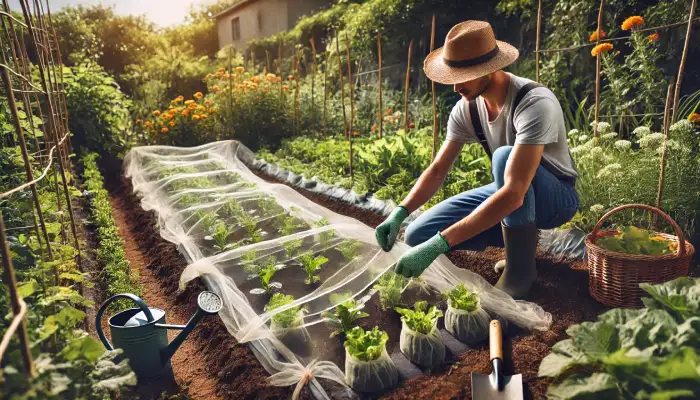
Integrate preventive measures such as crop rotation, using resistant plant varieties, and maintaining healthy soil. Healthy plants are less likely to succumb to pest invasions. Employ physical barriers such as row covers or netting to protect plants from flying and crawling insects. Additionally, encourage natural predators in your garden, such as ladybugs, praying mantises, and birds, by planting a diverse range of plants and providing habitats that attract these beneficial creatures.
When intervention is necessary, opt for the least harmful methods first. Mechanical methods like hand-picking pests off plants can be effective for small infestations. For more significant issues, consider organic pesticides such as neem oil or insecticidal soap, which are less damaging to the environment and non-target organisms than synthetic chemicals. Always follow application guidelines carefully to minimize the impact on the ecosystem.
Pruning and Maintenance Techniques
Pruning is essential for plant aesthetics, health, and productivity. Regular pruning helps control plant size, encourages healthy growth, and can improve fruiting and flowering. Understand the specific pruning needs of each plant in your garden; for example, some perennials should be pruned in the fall, while many flowering shrubs do best when pruned in late winter or early spring before new growth begins.

Equip yourself with the proper tools, such as sharp secateurs, loppers, and pruning saws for different sizes of branches and stems. Clean cuts help plants heal faster and reduce the risk of disease. Always remove dead, diseased, or damaged branches to keep plants healthy. Additionally, thin out areas with dense growth to improve air circulation, which can reduce the likelihood of fungal infections.
Maintenance also includes regular weeding, which competes with your plants for nutrients and water. Mulching around your plants not only helps suppress weeds but also retains soil moisture and adds organic matter as it decomposes. Setting a regular schedule for these tasks can keep your garden looking tidy and ensure plants have the best conditions for growth.
Utilizing Organic Fertilizers and Composts
Using organic fertilizers and compost is a sustainable way to enrich your soil without the drawbacks of chemical fertilizers. It can leach into waterways and degrade soil health over time. Organic fertilizers release nutrients slowly, matching the natural growth rhythm of plants and reducing the risk of nutrient burn.
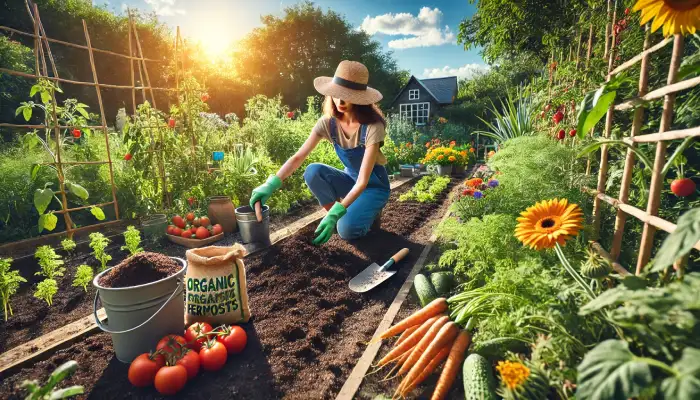
Create your own compost by collecting kitchen scraps (such as fruit and vegetable peelings), lawn clippings, and leaf litter. This recycles waste and produces a rich, nutritious soil amendment that can dramatically improve plant health. If creating your own compost isn’t an option, sourced organic compost from local farms or nurseries can also be highly effective.
When applying organic fertilizers, such as bone meal, blood meal, or fish emulsion, it’s important to understand the specific nutrient needs of your plants since different plants have different requirements. Applying these substances according to the growth stage of your plants—such as during planting, flowering, or fruiting—can maximise their effectiveness.
Embracing Seasonal Gardening
Gardening according to the seasons allows you to work with nature, leveraging its cycles to improve your garden’s productivity and health. Understanding the unique challenges and opportunities each season presents is key to a thriving garden.
In spring, focus on preparing your garden beds by clearing debris and old growth and amending the soil. It’s also the prime time for planting early crops and summer-blooming flowers. Monitor for spring pests and diseases as plants start their active growth.
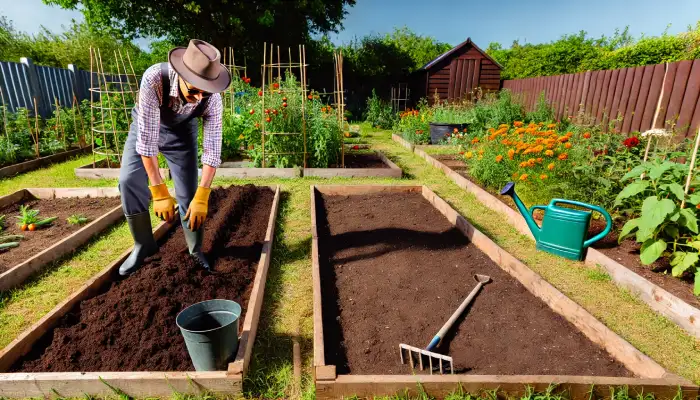
Summer demands regular watering, pest monitoring, and weed control. It’s also the perfect time for planting quick-growing, heat-loving vegetables and flowers that will thrive in the high temperatures. Regular feeding during this peak growing season helps plants to produce abundantly.
As autumn approaches, begin planting cool-weather crops and perennials that will bloom in the following spring. This season is also ideal for major structural changes in the garden, such as installing new beds or hardscaping, as cooler temperatures make the work easier, and plants are less likely to be stressed by alterations.
Winter is the season for planning and preparation. Assess the past year and plan for the next, ordering seeds and planning out rotations. Protect sensitive plants from frost and snow, and take advantage of the dormant period to prune appropriate trees and shrubs.
Advancing Your Skills with Advanced Techniques
As you become more comfortable with basic gardening practices, exploring advanced techniques can further encourage your garden’s diversity and productivity. Techniques such as hydroponics or aquaponics allow for gardening without soil, opening up possibilities in spaces that were previously unsuitable for traditional gardening.
Hydroponics involves growing plants in a water-based, nutrient-rich solution, which can lead to faster growth and higher yields. This method is particularly useful for those with limited space, as it can be set up indoors or on balconies.

Aquaponics combines hydroponics with fish farming. The waste produced by fish supplies nutrients for the plants, which purifies the water for the fish. This creates a sustainable closed-loop system that is productive and incredibly fascinating from an ecological perspective.
Both techniques require a bit of a learning curve and initial setup investment, but they can be highly rewarding. They reduce the need for water and soil, lessen the physical labor of gardening, and can be used year-round if set up indoors.
Summary
Improving your gardening skills is a rewarding journey that promotes your connection with nature and provides a satisfying, tangible outcome. By mastering the basics, embracing the rhythm of the seasons, and exploring advanced techniques, you can transform your garden into a flourishing haven. Remember, every garden is unique, so what works best for one might not work for another. Continuously learn from each season and each plant, and don’t hesitate to experiment.
FAQ
Q1: How do I make my garden better?
Improve soil health, select appropriate plants, and implement consistent maintenance routines like weeding and pruning. Regularly adding organic matter and choosing native plants can also boost your garden’s performance.
Q2: What makes a good gardener?
A good gardener is patient, observant, and adaptable, ready to learn from the garden’s responses, tackle problems instantly, and adjust techniques as needed.
Q3: What’s the best thing about gardening?
Gardening offers tremendous satisfaction and peace, combining physical activity with a connection to nature and the joy of harvesting your own produce.
Q4: What are the most common beginner mistakes in gardening?
Common beginner mistakes include improper watering, planting in unsuitable locations, neglecting soil preparation, and choosing plants that don’t fit the local climate or soil.
Q5: What is the best gardening method?
The best gardening method varies by individual needs and conditions. Options range from traditional in-ground gardening to raised beds, container gardening, and innovative methods like hydroponics or aquaponics.
